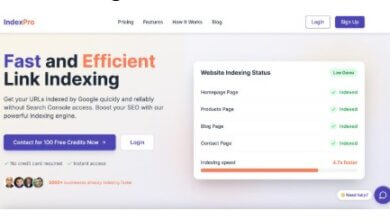Streamlining Business Workflows: A Roadmap to Operational Excellence
Unlock efficiency, reduce costs, and enhance productivity through smart workflow optimization strategies.

In today’s hyper-competitive and technology-driven business environment, efficiency isn’t a luxury—it’s a necessity. Organizations across industries are under mounting pressure to deliver faster, smarter, and leaner operations. To meet this demand, many are turning to Digital Transformation Consulting Services in the early stages of their modernization journey. These services help businesses reimagine legacy processes, leverage emerging technologies, and unlock new levels of agility and performance.
Digital transformation isn’t just about adopting new tools—it’s about reshaping how work gets done. It means evaluating core workflows, identifying bottlenecks, and aligning teams, systems, and strategies around streamlined operations. This shift enables companies to improve customer experience, reduce operational costs, and build resilience against disruption.
Understanding Workflow Streamlining
Workflow streamlining is the process of analyzing and redesigning existing operations to remove inefficiencies, eliminate redundancies, and enable automation. When workflows are streamlined, tasks are completed faster, teams collaborate better, and business outcomes improve.
But streamlining isn’t just about cutting steps—it’s about designing intelligent, purposeful workflows that align with your organizational goals. Done right, it leads to:
-
Improved speed and productivity
-
Greater accuracy and fewer errors
-
Enhanced customer and employee satisfaction
-
Lower operational costs
-
Stronger compliance and risk mitigation
Mapping the Road to Operational Excellence
Operational excellence is the result of disciplined execution, continuous improvement, and strategic alignment. To reach it, businesses must take a structured approach to workflow transformation. Here’s a roadmap that companies can follow:
1. Assess Current Processes
Begin by conducting a comprehensive audit of existing workflows. Use data, employee feedback, and customer insights to identify pain points, delays, and duplication. Mapping these processes provides a clear visual of where inefficiencies lie and which steps add value.
2. Define Success Metrics
What does operational excellence look like for your organization? Whether it’s faster delivery times, improved compliance, or reduced costs, define KPIs that will help measure the impact of workflow improvements.
3. Prioritize Critical Workflows
Not all workflows need immediate attention. Focus on high-impact areas—those that affect customers directly, involve multiple departments, or are historically prone to errors. Prioritizing these areas ensures quicker wins and stronger ROI.
4. Leverage Technology
Technology is a major enabler of workflow efficiency. Automation, artificial intelligence, cloud-based platforms, and data analytics can dramatically reduce manual tasks and increase decision-making speed. Choose tools that integrate well with your current systems and scale as your needs evolve.
5. Redesign with a Human-Centric Lens
While automation is powerful, it’s essential to design workflows that also make sense for people. Consider user experience at every stage—are tasks intuitive? Are approvals easy to manage? Can employees access real-time data without friction? A smooth human-machine interface is key to successful implementation.
6. Develop Capabilities Alongside Transformation
One of the most overlooked components of successful workflow transformation is capability-building. Employees must be prepared for new tools, responsibilities, and mindsets. This is where leadership development programs become especially important. These programs equip leaders with the skills needed to guide their teams through change, foster cross-functional collaboration, and embed a culture of continuous improvement.
Transformative leaders play a critical role in streamlining efforts. They encourage innovation, remove barriers, and ensure that people stay aligned with evolving goals. When leaders are actively involved in process improvement and empowered to act, operational excellence becomes a shared objective, not just a top-down directive.
Overcoming Common Barriers
Despite the promise of workflow streamlining, many organizations struggle to sustain momentum. Here are a few common challenges—and how to overcome them:
Resistance to Change
Employees may view workflow changes as a threat to their roles or routines. Communication is key. Explain the “why” behind the change, involve employees early in the process, and showcase how the transformation benefits both individuals and the organization.
Lack of Cross-Functional Collaboration
Silos are the enemy of streamlined workflows. Encourage collaboration between departments, especially in workflows that span multiple teams. Joint workshops, process owners, and shared KPIs can break down walls and foster alignment.
Overcomplicating Technology
Too many tools—or overly complex systems—can overwhelm teams and slow adoption. Choose solutions that are user-friendly, customizable, and capable of integrating with existing infrastructure.
Neglecting Culture and Skills
Technology is only as good as the people using it. Build a culture that embraces experimentation, learning, and agility. Invest in ongoing training to ensure employees are confident and capable in the new way of working.
Real-World Impact of Streamlined Workflows
Businesses that commit to operational transformation consistently outperform their peers. Consider a global logistics company that reengineered its delivery scheduling process using AI and automation. By reducing manual input and enabling real-time route optimization, the company cut delivery times by 25%, improved customer satisfaction, and reduced fuel costs.
Or a healthcare provider that digitized and streamlined its patient intake workflow. The result: reduced wait times, fewer administrative errors, and a better patient experience—while freeing up staff to focus on care rather than paperwork.
In both examples, the combination of clear process visibility, strategic use of technology, and leadership alignment was key to unlocking performance gains.
Sustaining Operational Excellence
Streamlining isn’t a one-time project—it’s an ongoing discipline. To sustain momentum:
-
Continuously monitor process performance using dashboards and analytics
-
Solicit feedback from both customers and employees to identify new opportunities for improvement
-
Celebrate wins to build engagement and highlight the value of operational excellence
-
Revisit processes periodically to adapt to changing business conditions and technologies
Operational excellence is a journey, not a destination. Businesses must stay agile and proactive to maintain their edge.
Final Thoughts
In a world where speed, precision, and adaptability determine success, streamlining business workflows is no longer optional—it’s a strategic imperative. By partnering with expert Digital Transformation Consulting Services, organizations can modernize their operations, unlock new efficiencies, and position themselves for long-term growth.
But tools and technology are only part of the equation. The future belongs to businesses that can operate with both precision and agility. With the right roadmap, the right mindset, and the right support, operational excellence is not just achievable—it’s inevitable.




